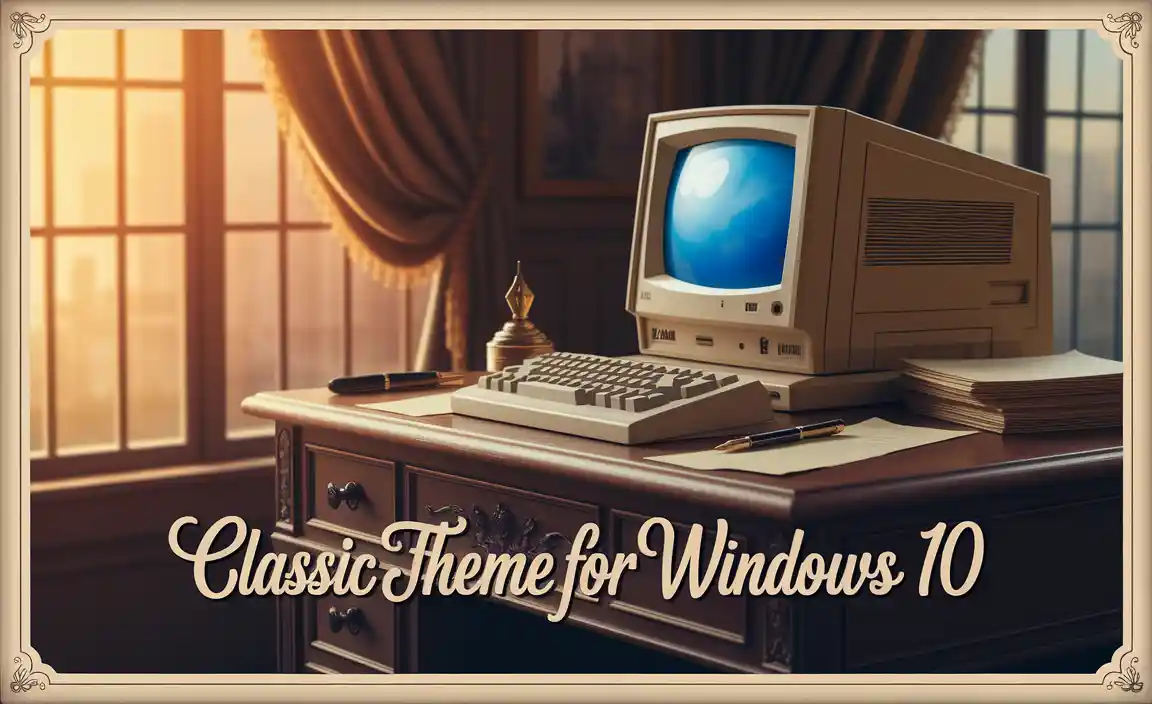Embracing a classic theme for Windows 10 offers a delightful way to refresh your computing experience without the steep learning curve often associated with advanced customization. For many, the default Windows 10 aesthetic, while functional, can feel a bit sterile and impersonal. Opting for a classic theme strikes a perfect balance, providing a visually appealing overhaul that harks back to simpler, more elegant designs, all while remaining incredibly easy to implement. This isn’t about complex registry edits or third-party software that might compromise system stability; it’s about leveraging built-in Windows features and readily available resources to create a desktop that feels both familiar and excitingly new.
The allure of a classic theme lies in its timeless appeal. Think of the clean lines, the subtle gradients, and the well-defined iconography that characterized earlier Windows iterations. These elements, when thoughtfully applied to Windows 10, can lend a sense of sophistication and order to your digital workspace. Whether you’re a student struggling with digital clutter, a professional seeking a less distracting environment, or simply someone who appreciates a bit of aesthetic polish, a well-chosen classic theme can significantly enhance your daily interaction with your computer.

Why Choose a Classic Look for Your Windows 10 Experience?
The modern Windows 10 interface, with its emphasis on flat design and dynamic tiles, can be a bit overwhelming for some users. A classic theme offers a refreshing alternative. It often prioritizes clarity and readability, making it easier to focus on your tasks. The visual cues are usually more distinct, reducing the cognitive load required to navigate your system. This can be particularly beneficial for users who spend extended periods in front of their screens, as a less visually jarring interface can contribute to reduced eye strain and improved concentration.
Beyond the functional benefits, there’s an undeniable emotional component. For many, classic Windows themes evoke a sense of nostalgia, reminding them of earlier computing eras. This can foster a feeling of comfort and familiarity, making your computer feel more like a personal sanctuary than a generic tool. It allows for a deeper level of personal expression, transforming your desktop into a space that truly reflects your individual taste and preferences.
Implementing Your Classic Theme for Windows 10: A Step-by-Step Guide
Getting started with a classic theme for Windows 10 at its core is surprisingly straightforward. Microsoft provides several built-in options that lean towards older aesthetics. You can begin by exploring the “Personalization” settings within Windows.
1. Accessing Personalization: Right-click anywhere on your desktop and select “Personalize.” This will open the main personalization window.
2. Themes Section: In the left-hand menu, click on “Themes.” Here, you’ll find a selection of pre-installed themes. While not all of them are strictly “classic,” some offer a more subdued and traditional appearance compared to the default Windows 10 look. Look for themes that feature simpler backgrounds, less aggressive color palettes, and traditional iconography.
3. Color and Background: Even if you don’t find a perfect pre-made theme, you can significantly alter the feel of Windows 10 by adjusting the accent color and desktop background. Under “Colors” in the Personalization menu, try selecting darker or more muted shades. Blues, grays, and subtle greens often contribute to a classic feel. Similarly, choosing a high-resolution image with a simpler scene – perhaps a nature landscape or an abstract minimalist design – can dramatically change the perceived theme.
4. High Contrast Themes: For a truly retro and highly functional classic look, Windows 10 offers High Contrast themes. These themes are designed for accessibility but also coincidentally provide a stark, old-school appearance. Navigate to “Ease of Access” > “High contrast” in the Settings app. Enabling a high contrast theme will dramatically alter the colors of windows, text, and icons, often using black backgrounds with white or yellow text, or vice versa, reminiscent of early operating systems.
Going Deeper: Advanced Customization for the Ultimate Classic Theme for Windows 10
While the built-in options are a great starting point, true enthusiasts might want to delve a little deeper to achieve the ultimate classic theme for Windows 10. This often involves utilizing third-party resources, but with a focus on reputable sources to maintain system integrity.
Custom Themes and Icon Packs: Websites dedicated to Windows customization (be sure to research reputable ones!) offer a treasure trove of custom themes and icon packs. These can completely transform the look of your taskbar, Start menu, File Explorer, and desktop icons to mimic older Windows versions like Windows XP or even Windows 7, known for their distinct graphical styles. Always download from trusted sources to avoid malware.
Start Menu Replacements: If the modern Windows 10 Start menu isn’t to your liking, consider third-party Start menu replacements. Many offer options that evoke the classic two-column layout found in Windows XP or the more streamlined design of Windows 7. These tools are generally user-friendly and allow for significant control over your Start menu’s appearance and functionality.
* Third-Party Visual Styles: For a more comprehensive transformation, some users opt for third-party visual styles. These are often applied using tools like UltraUXThemePatcher, which allows Windows to load third-party themes. These visual styles can alter almost every graphical element of the operating system, from window borders and buttons to scrollbars and buttons. Again, proceed with caution, use trusted sources, and create a system restore point before making significant changes.
Maintaining Your Classic Theme: Tips for Longevity
Once you’ve crafted your perfect classic Windows 10 theme, a little maintenance goes a long way. Regularly back up your customization settings if you’re using third-party tools. Keep your Windows operating system up to date, as major updates can sometimes interfere with custom themes, requiring minor adjustments. Most importantly, enjoy the elegance and simplicity of your personalized computing environment! Embracing a classic theme for Windows 10 is a rewarding journey that can revitalize your daily digital interactions, making your PC a more pleasant and productive space.
